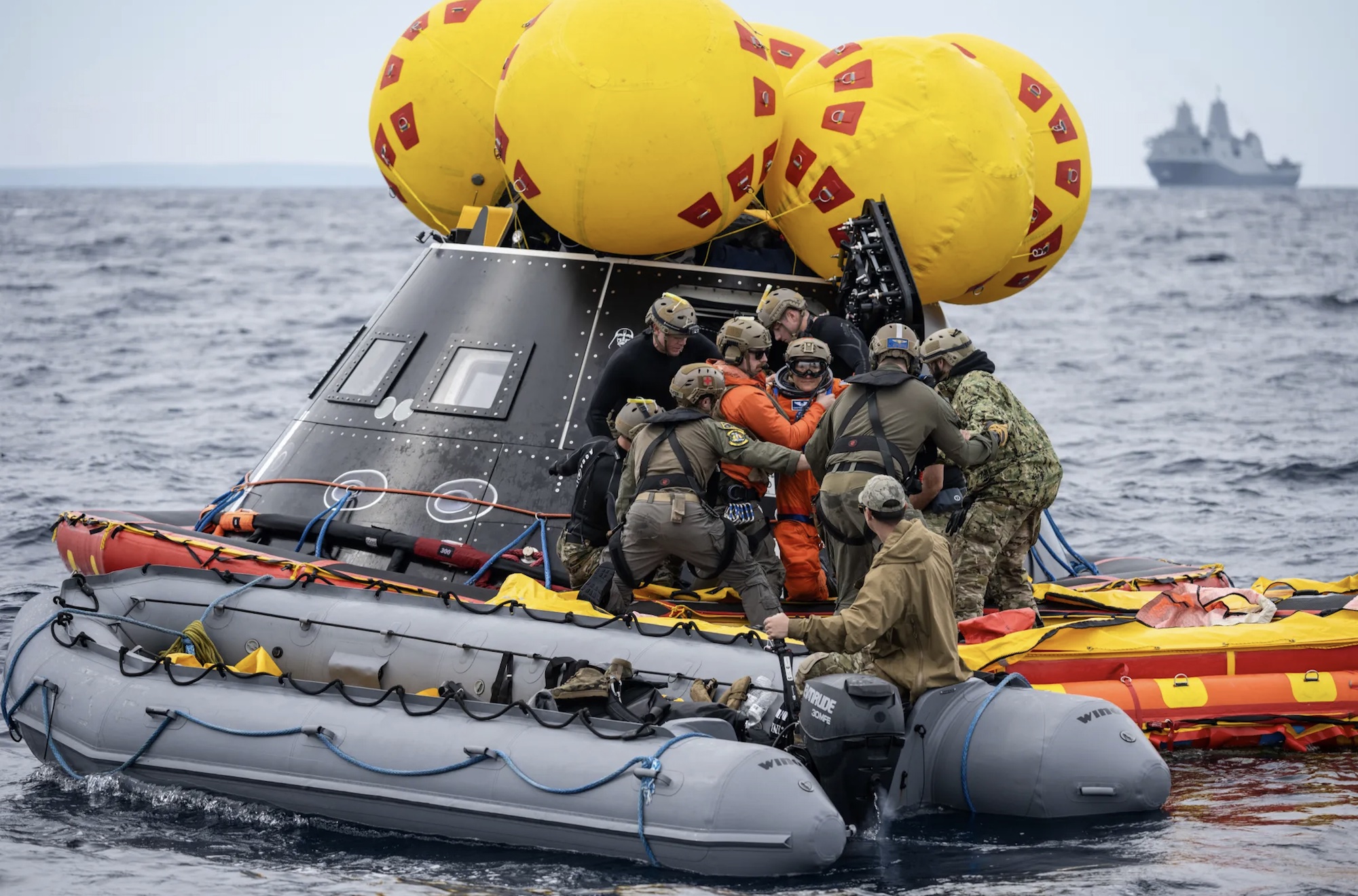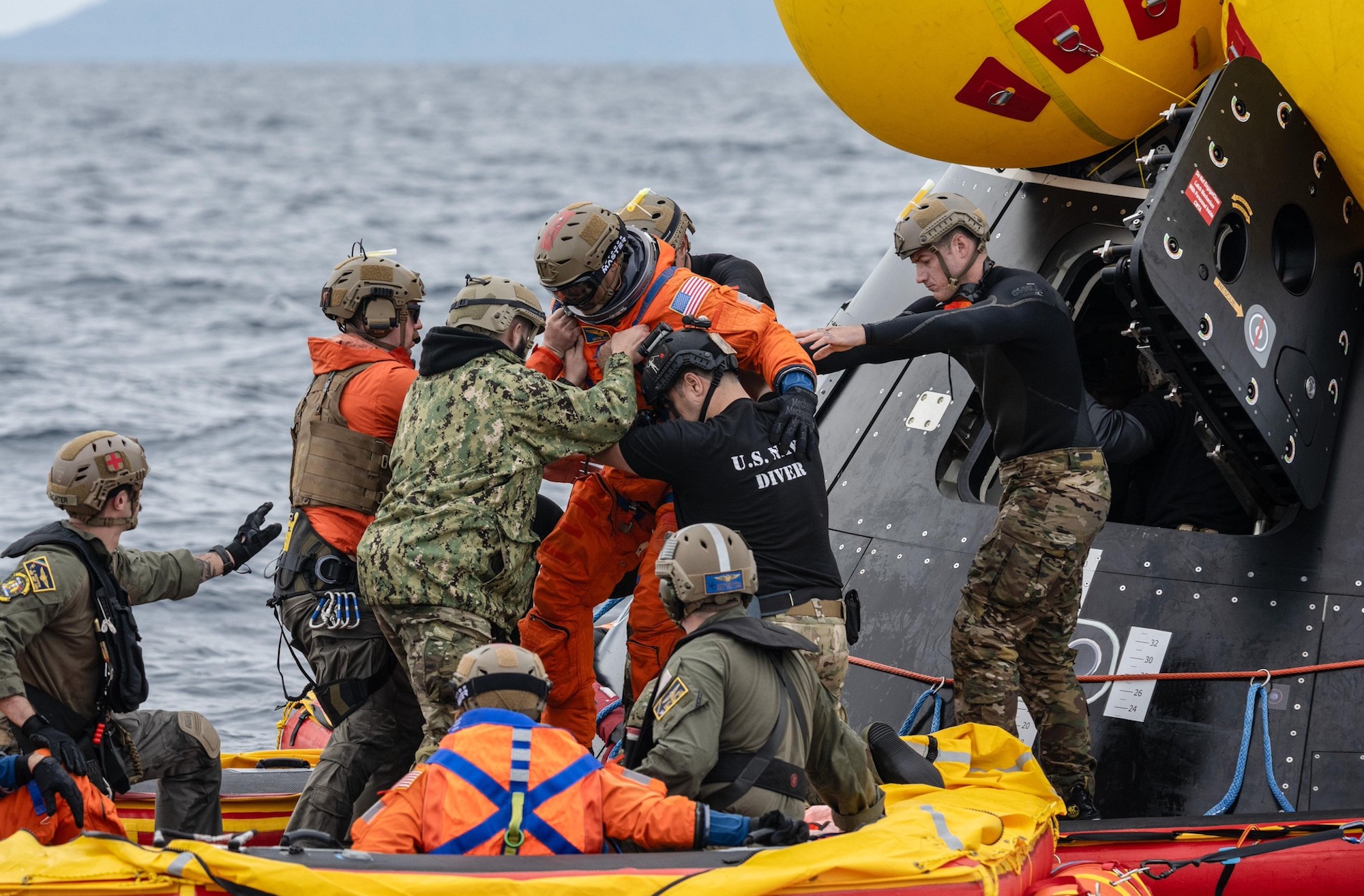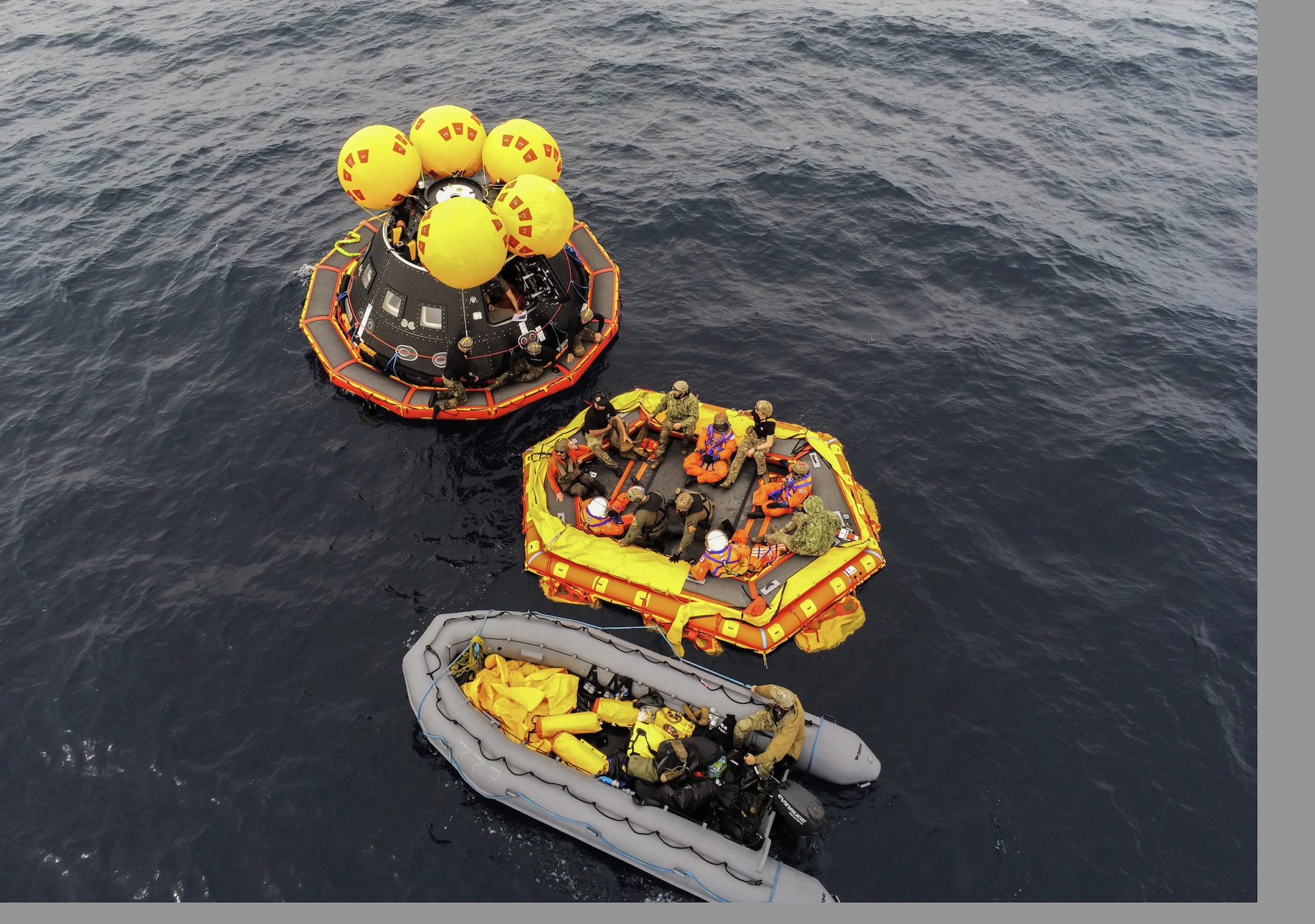NASA ’s Artemis II crew receive disappointing word in January when their lunar - flyby commission waspushed back at least 10 monthsto September 2025 .
The space agency said the delay was necessary to give Artemis teams “ more time to work through the challenges with first - clip developments and desegregation . ” While the supererogatory time give the space federal agency more time to fix the necessary hardware , it also gives the Artemis II gang — comprising Christina Koch , Victor Glover , Reid Wiseman , and Jeremy Hansen — extra time to aim for their highly anticipated moon mission .
The training include a recent trip to the Pacific Ocean , where the four crewmembers rehearse what would be the final stage of their 10 - mean solar day mission : the splashdown .

NASA/Kenny Allen
The rehearsal imply a mockup of the Orion space vehicle to add as much realism to the exercise as possible . However , the gravy holder , ships , and helicopters used in the dry run were the material deal .
When the astronauts render from their epical ocean trip next year and land in the ocean , a joint NASA and Department of Defense squad result by NASA ’s Exploration Ground Systems Program will be await off the coast of California to pluck them from the Orion ballistic capsule before channel them to a nearby naval ship .
Just before that , after Orion hits the water supply , a team of Navy underwater diver in little boats will first assess the environment around the capsule to check that there are no fortune present . Once cleared for glide slope , teams will stabilize Orion by install an inflatable dog collar to the space vehicle . To safely retrieve the astronauts , the divers also will instal an inflatable mint beneath Orion ’s side hatching to assist in the safe removal of the cosmonaut .

NASA/Kenny Allen
Once the gang has exited the capsule , the peck will be moved about 100 yard from Orion so the cosmonaut can be lift into a helicopter and transmit to the nearby naval ship . There , the astronaut will be taken to a medical bay for a post - mission evaluation before fly on a helicopter back to shoring and then forth to the Johnson Space Center in Houston , Texas .
“ Our highly choreographed recuperation operations will assist ensure the final form of NASA ’s first crewed mission to the moon in more than 50 years ends as a achiever , ” Lili Villareal , NASA ’s landing and recovery director , saidon NASA ’s web site .
The Artemis II crowd will be powered to cranial orbit by NASA ’s fresh Space Launch System rocket in a launching from the Kennedy Space Center in Florida . The trajectory will need follow within about 80 miles of the lunar control surface before circling the moon and render to Earth . A successful delegacy will pave the way for a crewed moon landing place that ’s currently pose for 2028 .

NASA/Jamie Peer